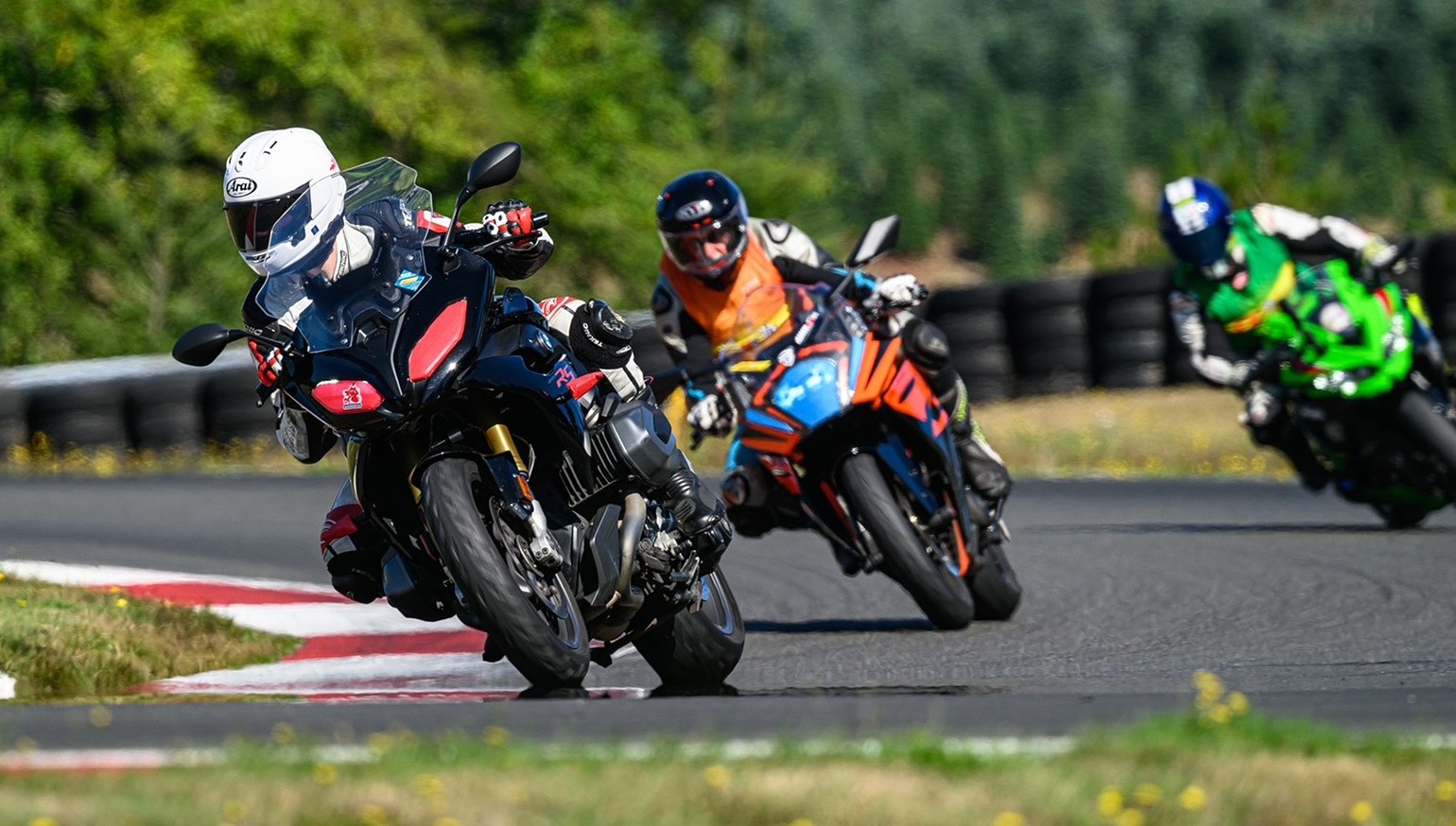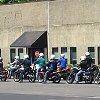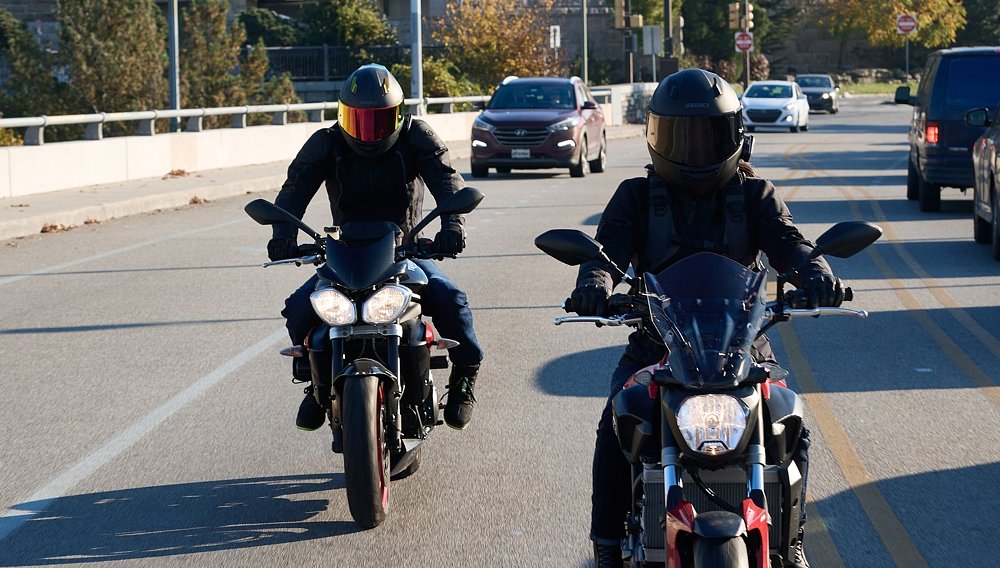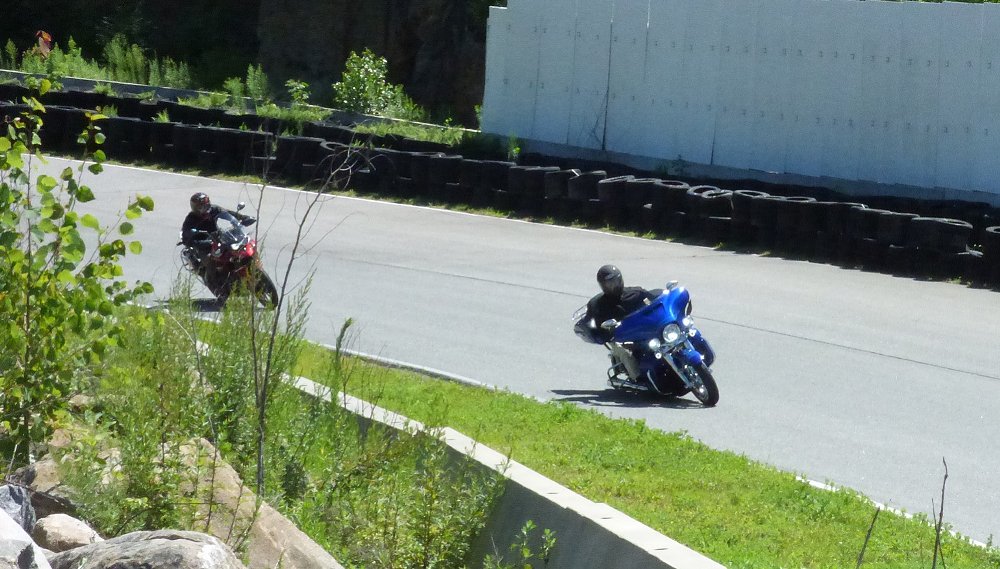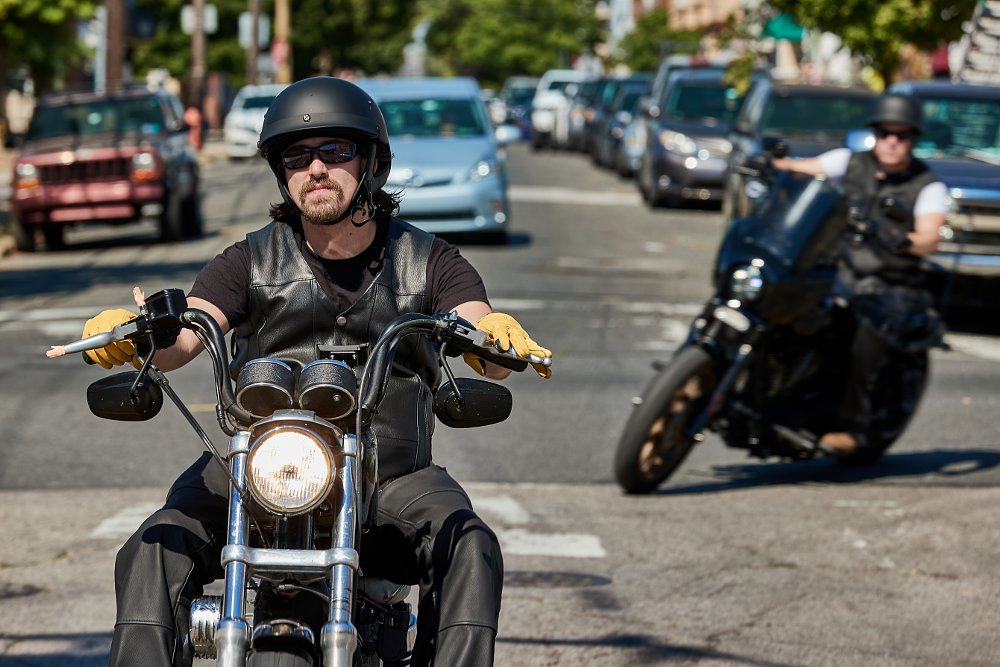I teach people to ride motorcycles. I also try my darndest to teach folks to effectively manage the risks of riding on the street and on the open road. In doing this, I am an advocate of the Motorcycle Safety Foundation's (MSF) approach and its extraordinarily refined curricula.
I also teach riders the fundamentals of sport or performance riding on the track. I try to do this in a way that allows the rider to manage risks, but also to go fast with skill and control. In this arena, I am an advocate of Ken Hill's Order of the Sport approach.
These are two very different sets of skills. And while they overlap in some important areas, they should not be confused. And I worry that for understandable business and marketing reasons, those of us in the track day, sport, or performance training side of our industry inflate the benefit to the street rider of performance training. I know that I used to.
Editor's note: Steve Del Vecchio has been a Motorcycle Safety Foundation (MSF) RiderCoach and Washington State Motorcycle Safety Program certified instructor since 2011. He is also an instructor with 2Fast Motorcycle Track Days and Instruction and the Ken Hill Masterclass.
I want to promote and encourage both types of training! And street riders should ride on the track and train on the track. But I believe it is a disservice to our fellow riders, to those who train people to ride on the street, and to the sport and performance riding community, to confuse or conflate what are two very different approaches to developing riding skills — approaches that have very different goals and are designed for radically different environments.
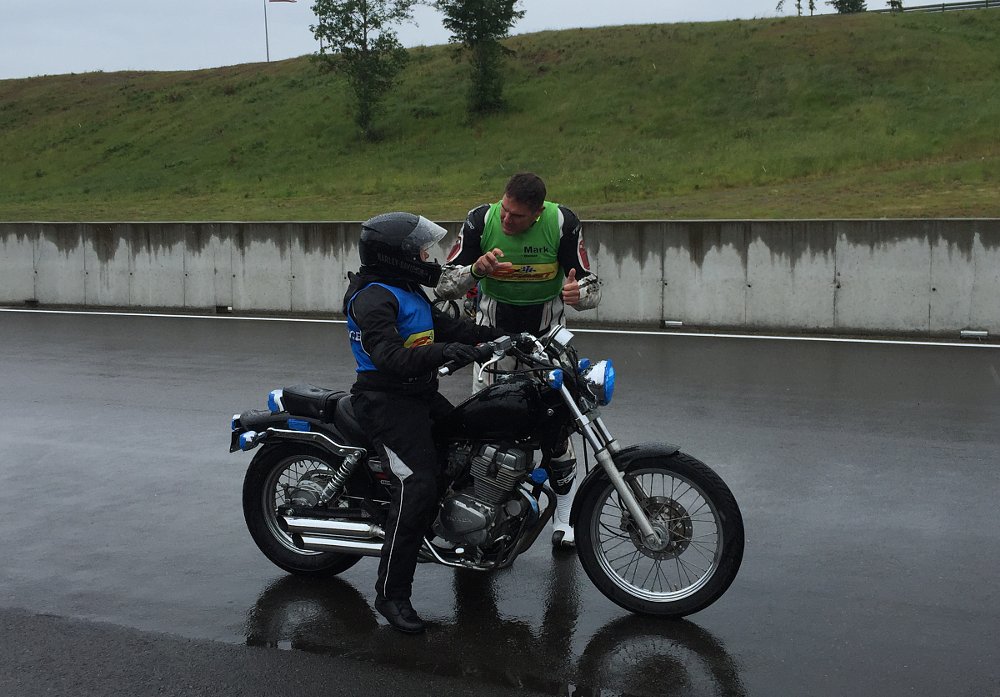
Street and track: The different priorities
Street or road riding must get us, without injury or damage, from one place to another in an environment that is largely uncontrolled and extremely threatening. Yes, riding is fun! But that fun ends if we crash.
Performance riding is a sport: riding a motorcycle on a closed circuit, whether racing or not, with a goal of approaching the limits of the machine's and rider's capabilities. The environment is highly controlled. It can be extremely fun, and we work to eliminate crashing, but we also prepare bike and rider so that crashing can be less consequential.
Here is how I think of the hierarchy of fundamental skills and factors when it comes to managing risk when riding a motorcycle on the street or the open road, from most important to least important:
- Rider attitude
- Rider situational awareness and anticipation
- Rider management of space and time
- Rider mental and physical state and capabilities
- Rider gear
- Motorcycle preparation and maintenance
- Advanced rider motorcycle control and handling skills
This assumes that the rider already has an intermediate level of motorcycle control and handling skills as taught in MSF courses. Riders should still develop advanced motorcycle control and handling skills, such as:
- Threshold or maximum braking
- Using throttle to manage traction with control and precision
- Cornering with control (including the ability to change lines and brake mid-corner)
- Using vision effectively at speed
But, relatively speaking, in terms of actual risk management in the real world, those advanced skills are the least important.
When it comes to performance riding on the track, Ken Hill's Order of the Sport is the best approach to risk management:
- Bike placement
- Vision and focus
- Motor controls
- Brake adjustability
- Turn-in point and turn-in rate
- Body position
In Ken's program, all of these are fundamental skills. But the order in which the rider focuses on, develops, and practices these essential motorsports skills is extremely important and key to what makes Ken's approach so powerful. I realize that one can argue that bike placement is akin to rider management of space and time, and so on. But frankly, they are really very different things.
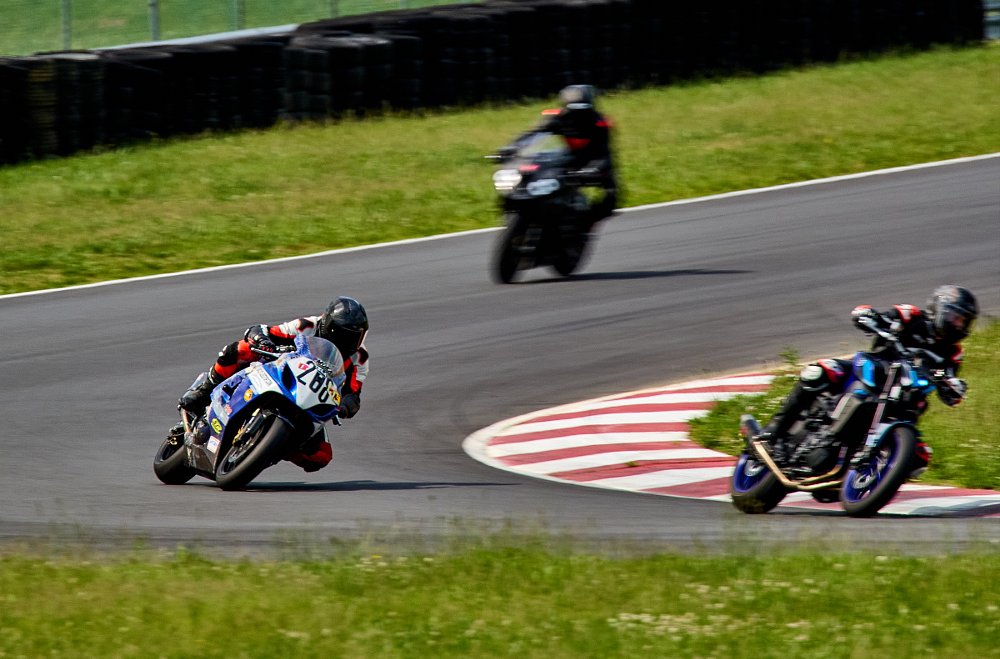
So what's the difference?
Riding safe, that is, managing risk while riding on the street or open road is mostly about doing everything you can to never allow yourself to be in a situation where you will need to call on advanced motorcycle-control skills.
Performance riders at the track continuously apply advanced motorcycle control skills. We can do this when riding on the track precisely because we don't have to worry about four-wheel vehicle traffic and constantly changing road conditions.
Think of it this way: Is the difference between what someone who drives safely on their daily commute, and what a top Formula 1 racer does only one of degree? Even when the skills are related at base level, the actual difference in application of those skills is so great that it becomes a fundamentally different activity. The exact same thing is true when comparing the practice of safe motorcycle riding on street or road with proficiency in the highly demanding sport of riding a motorcycle at speed on a track. It is both a difference in which skills are prioritized and in how they are applied. And thus, it is two fundamentally different sets of skills, albeit with significant overlap.
What about "canyon carving?"
I've done my share of riding on mostly low-traffic, open, curvy roads in places like rural San Diego County, northern Alabama, eastern Tennessee, northern Georgia, Oregon, and Washington state. After 15 years of track riding and racing, I no longer think of this kind of riding as performance or sport riding. I don't think any rider should. The uncontrolled environment means the risks are just too high to support a performance-riding approach to riding on public roads — no matter how seductive. Maybe we will someday have a Palomar TT, but until then we should not treat our rural roads as informal tracks.
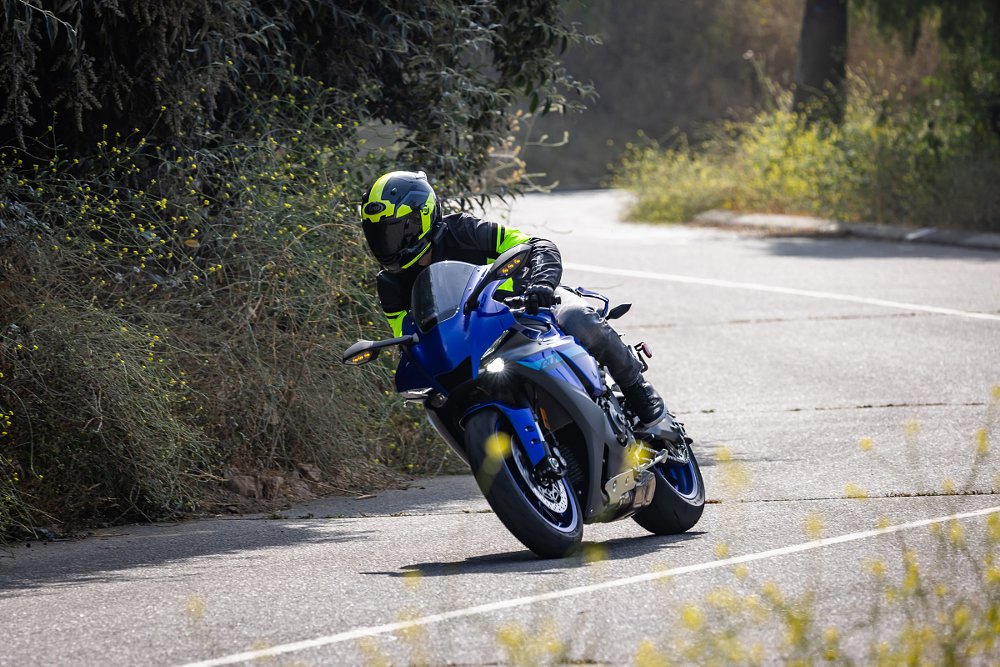
Some of the emphasis on developing cornering and braking skills for street and road riders stems from the very sad fact that a significant percentage of our motorcycle fatalities are single-vehicle crashes that happen on beautiful spring and summer days. We tend to think that these are low-skill riders who enter a curve, panic, and run off into a tree or barrier. This may be true — we don't have enough hard data to know for sure — but while I agree that track-based training is the best way to develop the cornering and braking skills to help reduce risk in this scenario, I do not agree that the best way to teach this to street riders is in the context of a sport or performance-oriented program.
Different training approaches for different kinds of riding
The ideal solution is a program oriented toward street and road riding, but with instruction taking pace on the track. Fortunately, such programs do exist.
Two examples on opposite sides of the United States are the Cascade Street Strategies course, developed by Jesse Murphy of Cascade Motorcycle Safety, and the Non-Sportbike Training Days (previously called Advanced Street Rider Training when this article was published on Common Tread two years ago) created by instructor and author Ken Condon.
This is not a complete list — just a starting point. When considering an instructional program, keep in mind that quite a few track-based programs that promote their benefits for street riders are still performance-oriented programs. The two I listed here ones that I know fully differentiate and separate their street-rider-oriented programs from their sport or performance training.
Be safe, keep learning, ride well, and have fun!

 Membership
Membership

